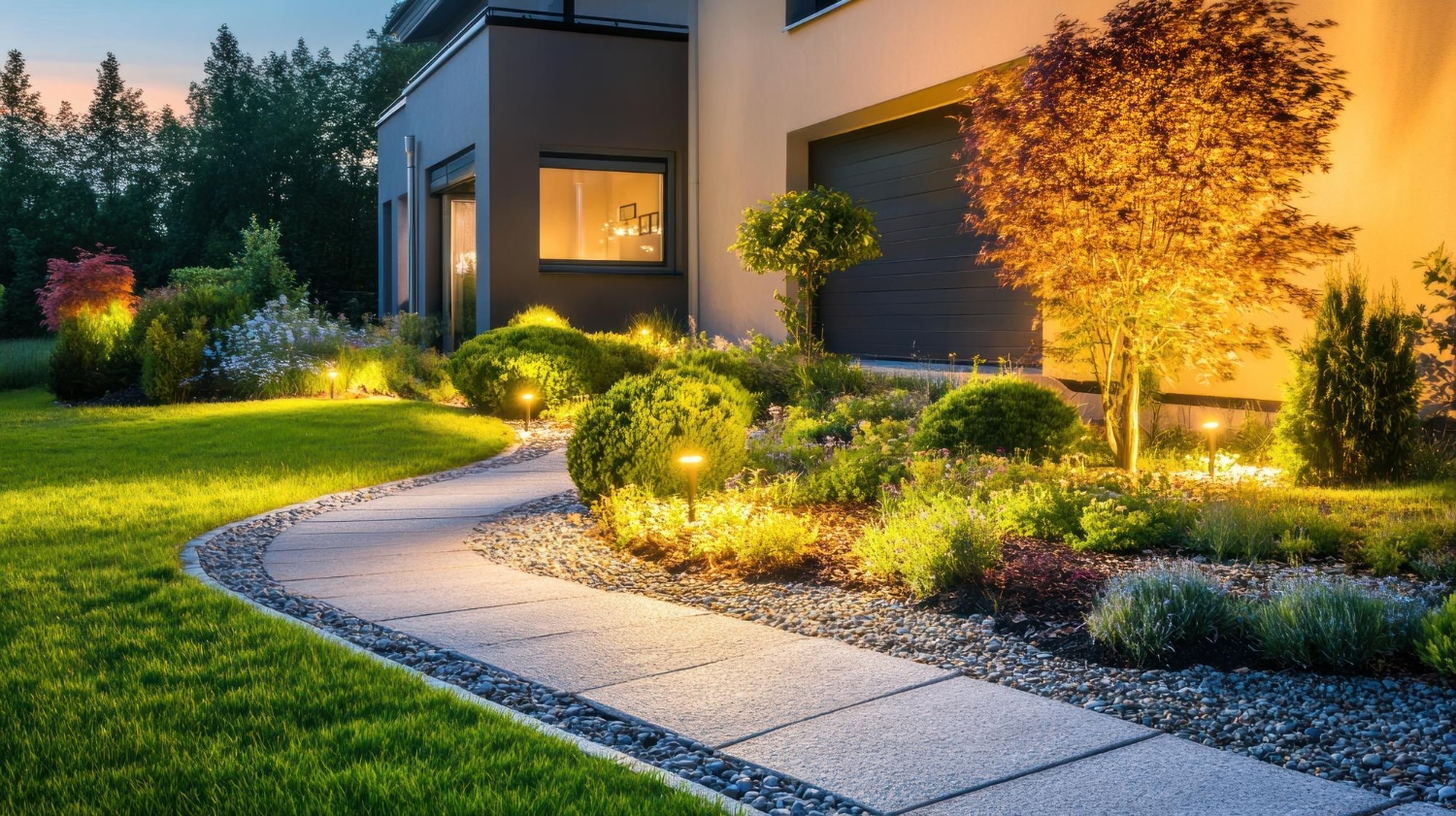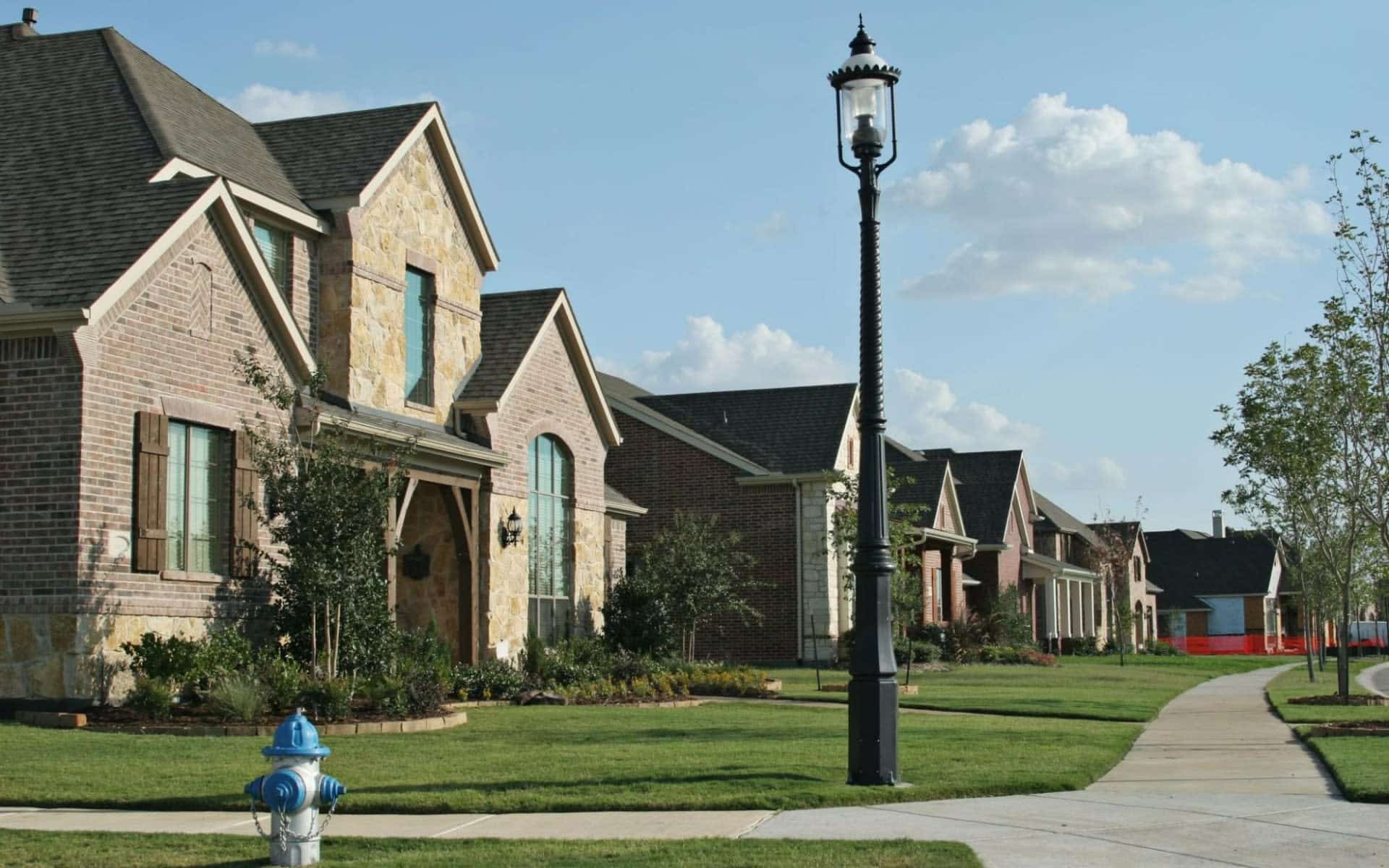Landscape lighting can transform your outdoor space, creating a beautiful and inviting atmosphere after dark. We’ve installed many outdoor lighting systems and know how much they can boost a home’s curb appeal. Properly placed landscape lights highlight architectural features, illuminate pathways, and add ambiance to gardens and patios.
Installing landscape lighting is a project many homeowners can tackle themselves with the right planning and tools. The process involves choosing fixtures, laying out the design, running low-voltage wiring, and connecting everything to a transformer. We’ll walk you through the key steps to create a professional-looking lighting setup.
Planning Your Landscape Lighting
Good landscape lighting brings your outdoor spaces to life at night, highlighting key features and creating ambiance.
Assessing Your Outdoor Space
Assess paths, steps, and entryways that should be lit for safety, and note special features like trees, fountains, or garden beds you want to highlight.
You could make a simple sketch of your yard, marking the house, paths, and key landscape elements. This gives the installers a bird’s-eye view to work from. Also, check for existing outdoor outlets as knowing where power is available helps with planning.
Don’t forget to consider your neighbors as you want to light your space without shining bright lights into their windows.
Creating a Lighting Design Plan
With the yard assessment done, you can work with the lighting team to create a plan, considering goals for each area, This includes safely lighting steps and mood lighting in dining areas, for example.
Lights should be layered, meaning different fixtures for various purposes. Pathlights guide people along walkways, uplights showcase trees or architectural features, and spotlights illuminate larger areas.
Balance is key and the aim is for a mix of light and shadow. Too much light can be harsh and wastes energy, while too little might not meet your needs.
Selecting Lighting Fixtures
Look for quality, weather-resistant lighting options that will last outdoors. LED lights are a good choice as they use less energy and last a long time.
You should match fixture styles to your home’s architecture. Modern homes should use sleek, minimal lights, while traditional houses often suit classic lantern styles. Fixture placement matters too, directing light where you want it, while shielded fixtures reduce glare and light pollution.
Don’t forget about the bulb color. Warm white light (2700-3000K) creates a cozy feel and cooler light (3000-4000K) works well for task lighting.
Installing the Lighting System
Installing a landscape lighting system involves careful planning and proper execution, from placing the transformer to burying the cables.
Determining Transformer Location
Find a good spot for the transformer which should be close to an outdoor electrical outlet and protected from the elements. A good place is often near the house, under an eave, or in the garage. Ensure it’s not in a spot that gets wet or flooded.
The transformer needs to be at least 12 inches off the ground, it’s usually mounted on a wall or post. It’s important to keep it away from sprinklers or other water sources. Remember to check local codes as some areas have rules about where you can put transformers.
Laying Out Wire Runs
Next, plan the wire runs, deciding how the wires connect the transformer to each light. Start by making a map of your yard, marking where each light will go, and drawing lines for the wires. It’s best to keep wire runs short as long runs can cause voltage to drop, making lights dim. Try to keep runs under 100 feet when possible.
Futureproof the design by adding a few extra feet of wire at the end of each run as this makes it easy to add more lights later.
Digging Trenches and Burying Cables
Now it’s time to bury the cables, using a shovel or trenching tool to dig narrow trenches. The trenches should be about 6 inches deep to keep the wires safe but easy to reach if needed. Lay the wire in the trench carefully, being sure not to nick or cut the wire.
At each light location, leave a loop of extra wire to make it easier to connect the lights. After laying the wire, cover it with dirt but don’t pack it too tight as loose soil lets water drain and keeps the wire cool.
Electrical Safety and Regulations
Safety is crucial when installing landscape lighting and you need to follow key rules to protect yourselves and your property.
Working with Low-Voltage Systems
Low-voltage landscape lighting systems are safer than high-voltage ones as they use a voltage transformer to reduce the 120-volt household current to 12 or 24 volts. This lower voltage cuts the risk of electrical shock. You should always unplug the transformer before working on the system as even a low-voltage can give a shock.
Use weatherproof equipment for outdoor use and ensure all connections are watertight. Gel-filled wire connectors provide added protection. Proper wire sizing is key, using the right gauge wire based on the wattage and distance from the transformer. This prevents voltage drop and keeps our lights bright.
Checking for Underground Utilities
Before digging, call 811, a free service that marks underground utilities to keep us safe. Utility companies will come out and mark their lines, and you need to wait until all lines are marked before starting.
Dig carefully near marked lines and hand digging is safest within 18 inches of utility markings. If you hit a line while digging, stop right away and call the utility company for help, even if there’s no visible damage.
It’s also smart to keep a map of where you install your lighting wires as this helps with future landscaping or repairs.
Final Touches and Maintenance
After installing landscape lighting, fine-tune the system to ensure your outdoor spaces stay beautiful and well-lit for years to come.
Adjusting for Optimal Lighting
First, turn on the lights at dusk to see how they look in real conditions, then walk around the property to check each fixture’s angle and brightness. For pathway lights, make sure they illuminate the walking surface without glare and adjust spotlights to highlight key features like trees or architectural elements.
If a light is too bright, add a dimmer or switch to a lower-wattage bulb, and for areas that are too dark, add extra fixtures or reposition existing ones.
Routine Upkeep
Clean the fixtures every few months to remove dirt and debris as this helps maintain light output and prevents damage. Trim plants near lights to avoid blocking the beams, and in the fall, clear away leaves that might cover fixtures or wires.
Check for loose connections, tighten them as needed, and replace burnt-out bulbs promptly. For LED systems, this task is less frequent but still important. Finally, test the system regularly to catch any issues, including checking timers and photocells to ensure lights turn on and off as planned.
Understanding Warranty and Repairs
Most lighting fixtures come with a warranty and you should keep this information in a safe place. It’s important to know what’s covered and for how long.
Familiarize yourself with common issues like flickering lights or partial outages. Some problems you can fix yourself, like replacing a transformer fuse. Keep spare parts on hand, such as bulbs and fuses as this allows you to make quick fixes without waiting for replacements to arrive.
However, for more complex repairs, contact the manufacturer or a professional technician. They can help with issues like faulty wiring or damaged fixtures. Get in touch to discuss your next outdoor lighting project.





